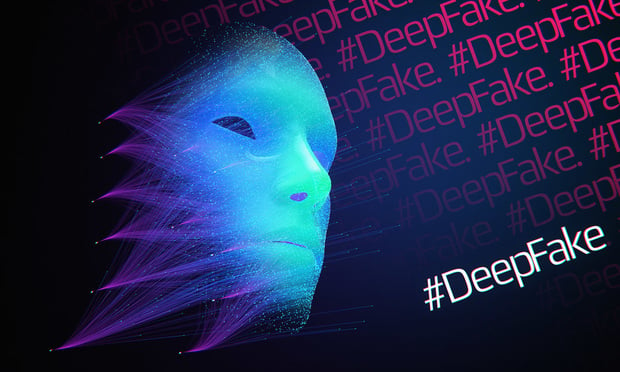Features

Stephen Thaler Is At It Again — Asks Supreme Court to Extend Copyright Protection to AI Works
A computer scientist is asking the U.S. Supreme Court to extend copyright protection to works created entirely by artificial intelligence in one of the first cases to reach the justices about the revolutionary technology.
Features

IP News
Federal Circuit Holds That Patentee’s Disavowal of Claim Construction Warrants Reversal of Summary JudgmentFederal Circuit Concludes That Two Organizations Lack Associational Standing to Challenge USPTO’s Denial of Petition for Rulemaking
Features

Supreme Court Set to Address Procedural Inconsistencies and Claims of Unconstitutional Vagueness Attributed to CAFC
The U.S. Supreme Court is set to commence its term on October 6. Among the cases it will review are several appeals concerning copyright and trademark law. One notable case seeks to address procedural inconsistencies and claims of unconstitutional vagueness attributed to the U.S. Court of Appeals for the Federal Circuit.
Features

Perplexity AI Sued for Copyright Infringement By Encyclopaedia Britannica and Miriam-Webster
A new lawsuit against Perplexity AI claims responses generated by the artificial intelligence platform violate the trademarks of Encyclopaedia Britannica and Merriam-Webster by attributing false information to their widely esteemed brands. The complaint alleges Perplexity’s generative AI “answer engine” violates the plaintiffs’ copyrights and also cites them as sources of false or incomplete information.
Features

WTF? Round Two: The Federal Circuit Grants Brunetti (and Trademark Owners) a Reprieve
In August, the Federal Circuit issued a surprisingly self-critical ruling in the long-standing dispute between Erik Brunetti and the USPTO over Brunetti’s efforts to register the term F*CK for a wide variety of goods and services. The Federal Circuit concluded that the Board’s decision in In re Brunett lacked sufficient clarity and therefore vacated it for further proceedings, which although facially unremarkable, may not only prove to be a boon to Brunetti, it may also be highly beneficial to many trademark owners who have been forced to wrestle with failure-to-function refusals.
Features

Federal Judge Grants Preliminary Approval of Anthropic’s $1.5 Billion Settlement In Copyright Case
A federal judge in the Northern District of California granted preliminary approval on September 25 to a $1.5 billion settlement between Anthropic and a class of authors who alleged that the artificial intelligence company used their copyrighted works to train its chatbot Claude without their consent. The settlement is the largest copyright settlement of all time, covering 482,460 works and paying authors slightly more than $3,000 per work infringed.
Features

The Rise of ‘Settled Expectations’ In USPTO Review and the Fallout for Patent Owners and Challengers
The landscape for discretionary denials at PTAB is evolving quickly; both patent challengers and owners must adapt their strategies to ensure they are not left behind by the USPTO’s new approach.
Features

What Will Become of ‘Schedule A’ Complaints In Counterfeit Goods Litigations?
Many companies have been participating in the growing trend of challenging counterfeit products of their goods by filing “Schedule A” lawsuits. These suits are mass actions typically alleging intellectual property infringement and they allow plaintiffs to sue many defendants at once, with the defendants’ names grouped in a “Schedule A” appendix attached to the complaint.
Columns & Departments

IP News
Federal Circuit: Board Erred in Finding No Likelihood of Confusion Between KIST and SUNKIST MarksFederal Circuit: No Jurisdiction Where Petitioner Offers a Non-Patent Law Related Ground for Relief
Features

AI Against Counterfeits: How Smart Technology Is Reshaping Brand Protection and Platform Accountability
As AI becomes more sophisticated at detecting fakes, it is not just changing how brands protect themselves — it has the potential to change the legal framework for determining when platforms themselves might be held responsible for the counterfeits sold on their sites.
Need Help?
- Prefer an IP authenticated environment? Request a transition or call 800-756-8993.
- Need other assistance? email Customer Service or call 1-877-256-2472.
MOST POPULAR STORIES
- Second Circuit Reinforces Bankruptcy Code Settlement Payment Safe HarborThe Second Circuit affirmed the lower courts' judgment that a "transfer made … in connection with a securities contract … by a qualifying financial institution" was entitled "to the protection of ... §546 (e)'s safe harbor ...."Read More ›
- The DOJ's Corporate Enforcement Policy: One Year LaterThe DOJ's Criminal Division issued three declinations since the issuance of the revised CEP a year ago. Review of these cases gives insight into DOJ's implementation of the new policy in practice.Read More ›
- The DOJ's New Parameters for Evaluating Corporate Compliance ProgramsThe parameters set forth in the DOJ's memorandum have implications not only for the government's evaluation of compliance programs in the context of criminal charging decisions, but also for how defense counsel structure their conference-room advocacy seeking declinations or lesser sanctions in both criminal and civil investigations.Read More ›
- Use of Deferred Prosecution Agreements In White Collar InvestigationsThis article discusses the practical and policy reasons for the use of DPAs and NPAs in white-collar criminal investigations, and considers the NDAA's new reporting provision and its relationship with other efforts to enhance transparency in DOJ decision-making.Read More ›
- Questions Every Law Firm Business Development Leader Should Be AskingIn a legal marketplace transformed by technology, heightened client expectations, and fierce competition, law firm leaders must approach strategy with rigor and clarity. The following questions, accompanied by relevant statistics and explanations, offer a focused guide for uncovering opportunity and driving sustainable growth.Read More ›
